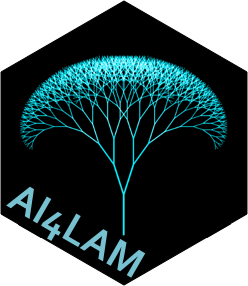Conference Agenda
Overview and details of the sessions of this conference. Please select a date or location to show only sessions at that day or location. Please select a single session for detailed view (with abstracts and downloads if available).
Please note that all times are shown in the time zone of the conference. The current conference time is: 25th Dec 2025, 05:32:03am GMT
|
Session Overview |
| Session | ||
SP01: Short Papers
| ||
| Presentations | ||
12:30pm - 12:45pm
Beyond the Single Voice: Co-Creating Knowledge with AI Harvard Art Museums, United States of America AI is suddenly everywhere—and expectations and hype are sky-high. With so many new tools available, GLAMs face real opportunities and real risks when it comes to using AI for collections metadata and access. At Harvard Art Museums, we’re in the early stages of developing a system that brings together computer vision (CV) and large language models (LLMs) to help enrich and diversify our traditional, human-generated metadata. This work builds on over a decade of experience experimenting with and applying AI to our collections, which include a dataset of about 500,000 images—already inspiring roughly 100 million tags and descriptions generated by AI. (All of which is available in the museums public API.) Our new approach draws on multiple AI models at once: where human cataloguing sometimes leaves gaps or reflects our own biases (like leaving out important, common terms or styles), we use a “group opinion” from several models to suggest new tags, descriptions, and even counts of objects in images. But the process is never fully automated—only if a majority of models agree do we consider a new observation (whether a fact or a subjective interpretation) for human review. This group-decision method acknowledges the known weaknesses of these systems (such as LLMs’ difficulty with visual counting), keeps the process transparent, and puts people firmly in charge. One fascinating discovery: AI can generate valid, sometimes unexpected subjective interpretations of art that don’t always align with expert opinions of art historians or curators. We see this tension as an opportunity, where GLAMs can use AI to create a more expansive and inclusive experience for museum visitors, allowing for a wider range of perspectives. As we take these steps, we’re learning a lot about building trust and AI literacy—how to be open about where AI is useful, where it falls short, and why human oversight matters. Our work aims to keep AI human-centered, offering new tools to support and empower staff instead of replacing their expertise. We hope our experiences help spark a broader conversation about how GLAMs can use AI responsibly to support their values, welcome new viewpoints, and fulfill their public missions in a rapidly shifting landscape. The presentation will cover these questions and topics.
References
12:45pm - 1:00pm
Computational description: an end-to-end case study 1Digirati, United Kingdom; 2Library of Congress LAM institutions share common challenges that arise from large, and often ever increasing, collections which are often undescribed, or under described; which are inaccessible to users because they have not been digitised or exist only in languages or scripts that are not widely understood; and which cannot be found because good quality metadata that supports search does not exist. Solving these problems has historically required expert labour which is a challenge when staff time and budgets are spread thinly. AI and ML methods are potentially a solution to some of these problems by supplementing expert staff time with computational methods. Typical use cases for AI or computational methods in LAM institutions include:
All of these potentially aid in the description, discoverability and accessibility of LAM collections. While all of the above opportunities to experiment with AI assisted description are a key part of LAM workflows, classification and data extraction are particularly difficult problems in the LAM domain for several reasons. LAM institutions usually require that the extracted data:
LAM data models may be complex and deeply nested; controlled vocabularies may have hundreds of thousands of terms; and formatting and cataloging rules may be nuanced and require training and expertise to apply consistently. Meeting these challenging standards are a key part of discoverability and interoperability of data across institutions. AI models have not always been able to meet these kinds of robust standards for data quality. In this presentation we will use a single case study—cataloging books and/or ebooks in MARC or BIBFRAME using large language models— to discuss how LAM organisations can use LLMs to support staff in the structured description of previously undescribed or sparsely described collection objects. We will work through the key stages of running an AI/ML experiment from initial concept to prototyping with staff and users using a specific real-world example to illustrate the benefits and the risks of applying AI methods to LAM problems. These stages include:
In the case of Exploring Computational Description—the latest in a series of experiments to explore the application of machine methods to book cataloging—the requirement was to describe ebooks using MARC or BIBFRAME. For fields that use controlled vocabularies or URIs, the requirement was to use the appropriate controlled vocabulary such as LCNAF (for names), LCGFT (for genres) and LCSH (for subjects). We will discuss, in the context of this experiment:
Exploring Computational Description will form a case study throughout the presentation to illustrate potential opportunities and potential risks in the application of generative AI and LLMs to the creation of structured LAM catalog data from uncataloged or under cataloged resources. | ||
